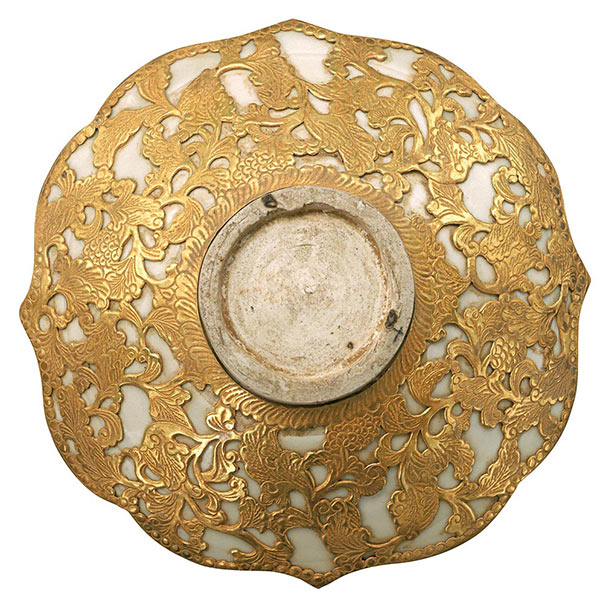When cast, bronze vessels had a yellow color resembling gold – and this is why the people of those early periods used the term jin, which in modern Chinese means "gold", to refer to these bronze vessels. Since gold was extremely rare during those early periods, very few pieces were produced during the Shang and Zhou dynasties. However, during the Han Dynasty (206 BC–220 AD), more gold objects were produced as a result of the contact with nomadic tribes from the north of China, as those tribes were fond of gold items.
During the 7th century and the first half of the 8th century, significant quantities of gold were sent from Tibet to China as a tribute, making gold very popular with the Tang aristocracy. It was at that time that gold and silver vessels began to be produced on a large scale by the imperial gold and silver workshops.
 |
|
White-glazed stoneware dish decorated with gold, northern China, nomadic Qidan tribe, 10th century AD, diameter: 14cm. [Photo provided to China Daily] |
In the 10th century, nomadic tribes known as Qidan (or Khitan) invaded part of northern China and founded the Liao Dynasty, during which they ruled this large territory from 907 to 1125. The Liao people were extremely fond of gold and used it to produce belts, jewellery, horse harnesses, saddle ornaments, funerary objects (such as boxes, bowls, dishes, mortuary masks and caps) and items used for religious rituals. All those objects were either cast in pure gold, or made in wood or ceramics and covered with gold.
Among them, the rarest Liao creations are white-glazed ceramics covered with gold. Those ceramics were made by Chinese craftsmen from the Ding and Cizhou workshops who, after the conquest of the Hebei province, worked in the Liao kilns in Gangwa (about 70km southwest of Chifeng) and Longquanwu (west of Beijing).